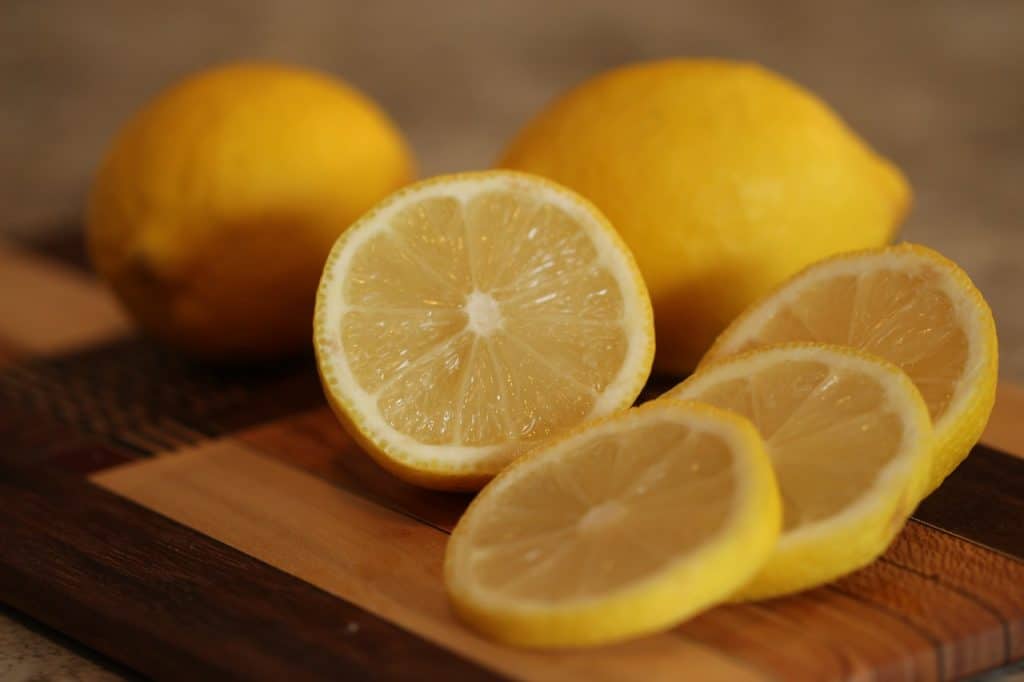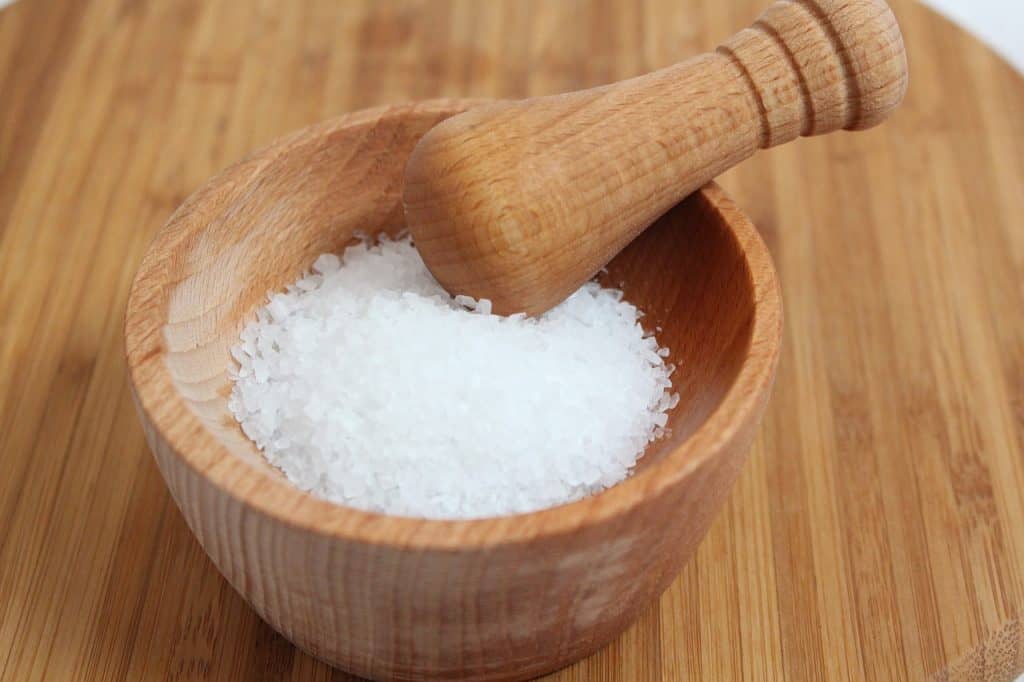Fleas are a stubborn pest that can affect any home or any dog at any point in time as long as the conditions are right for the fleas to thrive. Once you see one flea jumping or crawling on your dog or in your home, there will soon be hundreds making their way into your home. Although fleas are known to be quite difficult to remove, you can easily stop fleas in their tracks with the assistance of home remedies for fleas on dogs.
Causes
Fleas can be found in any home or yard, even if there are no pets present. This is due to the fact that fleas can lie dormant in carpets, grass, beddings, or other suitable environments until a ‘meal’ walks by and becomes the perfect host.
Fleas can be identified by their dark brown, near-microscopic appearance. Furthermore, fleas can and will jump from host to host, but contrary to popular belief, they cannot fly.
Fleas are highly resistant to freezing temperatures however they are most commonly seen in the summer months. The humidity and heat are attractive to the fleas because the warmth and moisture are optimal breeding conditions.
One important factor to understand in order to eradicate fleas is the life cycle of the flea. The life cycle of fleas occurs in four stages:
The life cycle of fleas
- Egg
- Larvae or Caterpillar
- Pupa or Cacoon
- Adult
The amount of time it takes for a life cycle to complete depends on the environment as well as available hosts. If all conditions are right, a cycle can be completed within two weeks.
The cycle starts when an adult female begins to lay her eggs. She will lay eggs on the host and will lay eggs up to three times each day with twenty to thirty eggs in each layer. While the adult female is laying her eggs, she will feed on the host by biting them and sucking the blood. Over the entire life span of a single adult female flea, several hundred eggs will be laid. The sheer amount of eggs produced is one of the main causes of flea infestations.
Once the eggs have been laid, they will begin to develop on that spot. First, they will hatch into the larvae and begin to feed on whatever suitable food source is nearby. This includes dead skin cells, organic matter, and/or the blood-rich feces of adult fleas.
The third stage of the life cycle is when the larvae will form a cocoon to pupate. This part of the cycle will occur after the larvae have molted two times. Once the adolescent fleas are in their cocoons, they will remain there until the environmental conditions are just right. The cocoons can sense carbon dioxide exhales, vibrations, as well as warm temperatures. These are all signs that a host is nearby and the combination of the three will trigger the emerging of adult fleas.
The newly hatched adult fleas can jump onto a host right away. This will further induce the flea life cycle which is another reason why fleas are such stubborn pests. Due to the tenacity of this parasite, it is vital to use more than one home remedy for dog fleas to fully break the cycle, kill any existing fleas and eggs, as well as prevent the fleas from ever returning.
Signs and Symptoms
There are several things you can easily identify that are sure signs of fleas.
- Intense, almost non-stop itching
- Redness of the skin
- Hair loss (most especially in the base of the tail or near the rump)
- Scabs
- Irritated skin
- Dry skin
- Dried blood in the fur or on the skin
- Flea dirt (This is one of the first major signs of fleas. Flea dirt is the blood-filled feces of any present adult fleas. The small, dark spots will appear to be like specks of dirt or coffee grounds and are usually found at the base of the tail.)
- Development of hotspots
- Development of flea allergy dermatitis
It is also important to realize that fleas will bite humans as well. If you notice that you have any of the following symptoms, there are most definitely fleas present in the home and/or on your dog. Signs and symptoms of flea bites in humans are:
Signs & symptoms of flea bites in humans are:
- Intense itching
- Several small red bumps, usually in groups of three, that turn to white when they are touched
- Hives appearing
- Rashes developing
- Bite marks located in the folds of the skin (back of the knees, armpits, under the breasts, within stomach folds, etc.)
More often than not, dog owners whose precious pooch is suffering from fleas will also show signs and symptoms that fleas are present. Since fleas can be such a nuisance and a stubborn parasite to remove, it is important to seek multiple treatments right away. This will help you break the life cycle and ease your dog’s symptoms.
Treatments
Seeking the assistance of herbal remedies will help you to get rid of fleas as well as prevent them from breeding and therefore returning. Using home remedies for dog fleas will help you ease your dog’s suffering while at the same time preventing the harsh chemicals generally associated with killing fleas.
1. Cleaning Your Home
One of the best ways to get rid of fleas is simply cleaning your home. Keeping your home clean prevents fleas from breeding and continuing the vicious cycle.
Required Ingredients:
- Vacuum
Process:
- Thoroughly vacuum any surfaces that are carpeted.
- Vacuum your entire home at least once per day.
- Make sure to throw away your vacuum bag after each use or thoroughly clean your vacuum if you do not use vacuum bags.
Notes: Using a vacuum will collect and trap any eggs present which will disrupt the life cycle of the fleas.
2. Making a Flea Trap
A simple flea trap will stop fleas from spreading while at the same time allowing you to monitor the number of fleas present. This remedy is an important tool for any follow-up treatments to ensure that fleas have actually left your home.
Required Ingredients:
- Dish soap
- 1 aluminum pie pan
- ½ cup of water
Process:
- Add a generous amount of dish soap to the pie pan.
- Combine the soap with the water and stir.
- Place the pie pan in an area that sees little movement (under the bed, outside, etc..)
- Leave overnight and check the trap in the morning.
- Replace every two to three days depending on the number of fleas found in the flea trap.
Notes: If you place a flea trap outside, it is important to change it daily so you do not attract any mosquitos.
3. Making a Flea Repellent Collar
Flea collars are usually the first tool many pet owners turn to in order to prevent fleas. You can make your own using a few ingredients from around the house that will be a natural flea repellent for dogs.
Required Ingredients:
- 3-5 drops of Lavender Oil
Process:
- Dilute the lavender oil with warm water in a small bowl.
- Take the bandana or collar and place the mixture on both sides. Allow the bandana or collar to become damp, but not saturated with the mixture.
- Rub the mixture into the entirety of the bandana or collar.
- Place the bandana or collar on the dog.
- Allow your dog to wear the homemade flea repellent collar for one week before repeating this regime.
Notes: Lavender oil is not only an excellent flea repellent, it also provides a pleasant aroma that will have soothing and calming effects for your dog.
4. Directly Applying a Flea Spray
Making a homemade flea spray is a great way to repel fleas naturally while at the same time providing a nice scent. This particular flea spray will also leave your dog’s coat shining.
This flea spray can also be used on your dog’s beddings and your carpets to give you an extra boost when fighting the life cycle of the fleas.
Furthermore, there have been a few studies on the effects of lavender oil in regard to flea and tick prevention. A sweet-smelling, all-purpose insect repellent, lavender essential oil performed well in recent studies as both a deterrent and a method of preventing eggs from hatching.
Additionally, Ohio State University recommends it for controlling fleas. A 2007 South African study found that formulas containing diluted lavender at rates of 10 to 20 percent lavender performed just as well as other flea and tick repellents when compared to artificial DEET (N,N-diethyl-m-toluamide) sprays.
Required Ingredients:
- 1 cup of white distilled vinegar
- 1 quart of water
- 2-3 drops of lavender oil
- Large bowl
- Large-sized spray bottle
Process:
- Combine the white distilled vinegar with the water and the lavender oil in a bowl.
- Gently stir and add to the spray bottle.
- Spray directly onto your pet making sure to avoid the eyes, ears, nose, and genitals.
- Leave the spray to dry on your dog.
- Spray your dog twice a day until the fleas are gone.
- Spray your dog’s bedding and your carpets at least twice per day until the fleas are no longer seen.
Notes: To apply this spray on the face and around the neck, spray the mixture onto a cloth and rub the cloth on the face and neck.
5. Bathing Your Dog in a Flea Dip
Using a flea dip is one of the first natural remedies for fleas you should use. The initial soak will kill off any adult fleas present. Additionally, any eggs or larvae found on the dog will also be killed.
Regularly using a flea dip is essential for breaking the life cycle of fleas.
Required Ingredients:
- ½ cup of freshly squeezed lemon
- 1 ½ to 2 cups of warm water
- ¼ cup of mild pet shampoo or baby shampoo
- Empty jar or bottle
Process:
- Combine the lemon, water, and shampoo of your choice by putting each ingredient in the jar or bottle.
- Gentle shake or stir to combine.
- Wash your dog with this homemade flea dip at least once per week.
- Allow the flea dip to remain on your dog for a few minutes to fully have an effect.
Notes: The amounts used will vary depending on the size of your dog. As a good rule of practice, use 2 parts water to every ½ cup of fresh lemon juice and soap. When using this flea dip, be careful not to get this mixture in your dog’s eyes.
6. Sprinkling Diatomaceous Earth
Diatomaceous Earth is a natural powder that will repel fleas instantly. Since it is natural, it is safe to use directly on your dog as well as your carpets or furniture.
Required Ingredients:
- Vacuum (if you plan on using the Diatomaceous Earth on your carpets or furniture)
Process:
- Take a small amount of the Diatomaceous Earth (depending on the size of your dog) and directly sprinkle on their back.
- Massage your dog to thoroughly distribute the Diatomaceous Earth.
- Take care to avoid the eyes.
- Let the Diatomaceous Earth remain on your dog.
- Repeat this every four days.
- Sprinkle Diatomaceous Earth directly on your carpets and furniture.
- Brush the Diatomaceous Earth into these areas and let it remain for four days before vacuuming it up.
- It is also advised to sprinkle the Diatomaceous Earth on your yard, should you have one.
Notes: If you are using Diatomaceous Earth around your home, ensure you are wearing a face mask. Although Diatomaceous Earth is non-toxic, it can cause your mucus membranes to dry out very quickly when it is breathed in. Also, ensure you are using Diatomaceous Earth that is NOT for fish tanks. If you are not sure which form of Diatomaceous Earth you are looking for, seek the assistance of the shop attendant and let them know your intended use.
7. Making a Repellent with Horse Apples
Horse apples are tart fruit that is a part of the mulberry family. Using horse apples to repel and prevent fleas is a more traditional method as it has been used for decades.
Required Ingredients:
- Knife
Process:
- Cut the horse apples into pieces and allow them to dry in the sun to become more potent.
- Once the horse apples have been dried, place the pieces throughout the home. (Window sills, under beds, hallways, garages, and the yard)
- Let the dried horse apples remain in place for at least two months.
- After the two-month period, replace them with newly dried horse apples.
8. Prevention with Citronella Oil Mixture
Citronella Oil is a strongly scented and fragrant oil that will protect against a wide range of insects and pests. Fleas are no exception and when it comes to preventing fleas from entering the home, citronella oil is a powerful tool.
When you combine Citronella oil with other essential oils known for fighting and preventing fleas, you will create a strong line of defense.
Required Ingredients:
- 1 Gallon of hot water
- 20 drops of citronella oil
- 10 drops of tea tree oil
- 10 drops of lemongrass oil
- 5 drops of geranium oil
- Spray bottle
Process:
- Combine all the ingredients together in a large bowl.
- Place the mixture into the spray bottle and use it to spray your home and your dog.
- Leave the citronella spray mixture on your dog until it dries.
- Repeat once per day until the fleas are gone.
- When you are spraying the home, you can repeat it daily or weekly.
Notes: It is important to remember that essential oils can be toxic to cats. If you have cats in your home, this remedy is not the best choice for your household.
9. Planting Pennyroyal
The strong scent of Pennyroyal is potent in preventing fleas from coming into your home. When the fresh herb of Pennyroyal is placed around the home, you will be able to stop fleas from continuing their life cycle inside your house.
Required Ingredients:
- Several potted Pennyroyal plants
Process:
- Place the Pennyroyal plants in high-traffic areas that will still provide sunlight to the plants.
- Leave the Pennyroyal plants to thrive.
- Make sure to water the plants once per day to keep them healthy and strong enough to do their job of fighting against fleas.
Notes: Pennyroyal is known to be toxic to pregnant women or pregnant pets. Do not use this home remedy if you, someone in your home, or a pet is pregnant.
10. Sprinkling Salt
Simple table salt is a wonder when it comes to getting rid of fleas. Any type and any brand of table salt will do the trick. Sprinkling salt throughout the home is a popular home remedy due to its ease of use as well as its low cost.
Required Ingredients:
- Vacuum
Process:
- Sprinkle generous amounts of table salt throughout your home and on your pet’s bedding.
- Let the table salt remain in place for a few hours.
- Vacuum the areas that were sprinkled with the table salt and repeat every other day until the fleas are gone.
11. Sprinkling Boric Acid
Boric Acid is known to be a natural insecticide that will kill and prevent a wide range of parasites and insects. Boric Acid can be sprinkled throughout the home and used on any type of surface.
Once you have sprinkled the Boric Acid, you will soon be flea free because the Boric Acid will dry out the fleas. The moment the fleas and flea larvae breathe in the Boric Acid, they will become severely dehydrated and quickly die.
Required Ingredients:
- 1-2 containers of Boric Acid
- Vacuum
Process:
- Sprinkle the Boric Acid on every surface in the home.
- Let the Boric Acid remain in place for one to two hours.
- Vacuum the Boric Acid.
- Repeat weekly until the fleas are no longer present.
12. Consuming Apple Cider Vinegar
Apple Cider Vinegar is a great way to combat fleas from the inside. Allowing your dog to drink a small amount of apple cider vinegar throughout the course of the fleas will give you an extra edge when you are fighting against the stubborn flea cycle.
Required Ingredients:
- Clean water
Process:
- Add clean water to your pet’s drinking bowl.
- Stir in the apple cider vinegar and let it remain in the drinking water.
- Make sure your dog(s) are drinking the water.
- Let your dog(s) drink the apple cider vinegar until there are no longer any fleas present.
Notes: As well as deterring any fleas, the apple cider vinegar will help soothe and repair your dog’s skin.
13. Making a Flea Repellent Sachet
This home remedy for fleas on dogs is simple to make. Although it is easy to do, making a flea repellent sachet is a safe way to prevent fleas from entering your home.
Required Ingredients:
- 1 dried lemon peel
Process:
- Sew the two pieces of fabric together on all but one side.
- Add the cedar chips, lavender, and lemon peel.
- Use a rubber band to seal the sachet.
- Place the sachet in low-traffic areas as well as near your pet’s bedding to repel fleas.
- Replace the sachets every month.
14. Using a Flea Comb
A flea comb is a great way to remove fleas that are already present on your dog. When you combine lemon with the use of the flea comb, you will have a strong home remedy against fleas.
Required Ingredients:
- Comb or brush
Process:
- Boil the pot of water and add the lemon.
- Turn off the heat once the lemon has been added and let the lemon steep in the hot water overnight.
- Once the lemon has steeped overnight you can dip the comb or brush into the mixture.
- Use the dipped comb or brush on your dog and re-dip the comb or brush after each stroke to thoroughly affect the coat.
- Let the lemon water remain on your dog until it dries.
- Repeat once each day until there are no longer fleas present.
Infographic
When you combine a few of these home remedies, you can be sure to eradicate these stubborn pests quickly and safely. Choosing to use these natural remedies will prevent the use of harsh and sometimes irritating chemicals while at the same time providing a powerful method of killing and repelling fleas.











